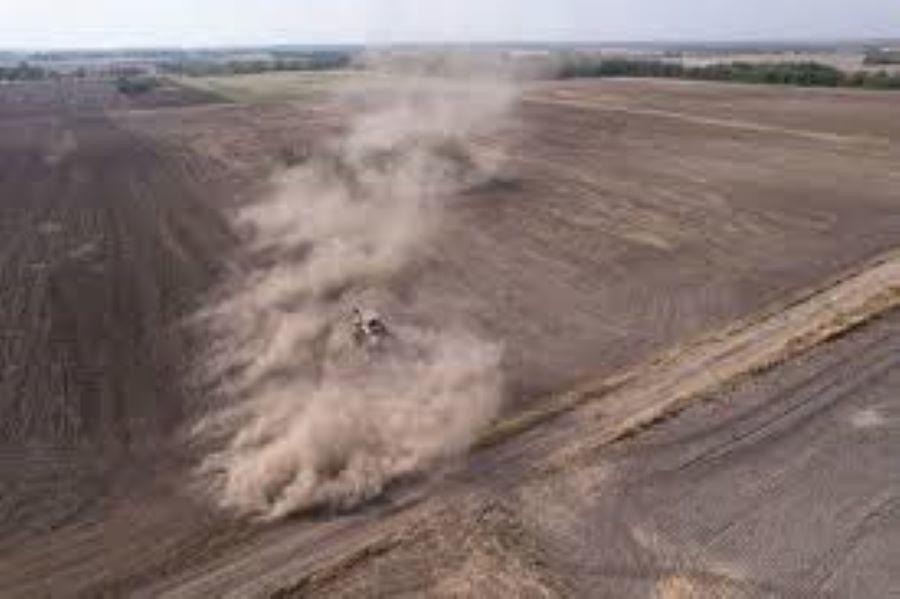The Homokhátság’s Thirst: Rethinking Drought Communication and Adaptation in Hungary’s Most Vulnerable Region

The Homokhátság, stretching between the Danube and Tisza Rivers, is one of Hungary’s most water-scarce regions — and an emblematic case of how ecological vulnerability and social fragility intertwine. Once known for its sandy soils and mosaic agricultural landscapes, this semi-arid plateau has become a “laboratory” of climate stress, rural depopulation, and the limits of traditional water management. As recent studies underline, the region’s exposure to drought is the highest in Hungary (Kovács et al., 2017), and by 2025 it is projected to face severe water deficits (Kovács et al., 2024).
Yet the challenges of the Homokhátság are not only hydrological. They are also communicative, generational, and institutional. Drought is what researchers call an “invisible crisis” — a phenomenon that unfolds slowly, often without the dramatic images of floods or storms. Its impacts are diffuse: soil degradation, declining yields, and the erosion of trust in institutions that manage water and land. These indirect effects make it harder to communicate risks, build collective understanding, or inspire timely adaptation (Teutschbein et al., 2023).
Bridging divides: knowledge, trust, and communication gaps
The Homokhátság’s population — about 620,000 residents across 117 rural municipalities — faces multiple vulnerabilities. Aging farmers, shrinking youth populations, and infrastructural deficits all constrain the region’s capacity to respond effectively (KSH, 2022). In such contexts, how information about drought risks circulates can be as decisive as the information itself.
Recent Hungarian research has shown that public communication on drought remains fragmented, often dominated by technocratic language or reactive crisis narratives (Kovács et al., 2024). Rural residents, especially older generations, rely heavily on interpersonal networks and local radio or Facebook community pages, while younger groups engage more with short-form visual media such as TikTok or Instagram. These differences create a generational information divide — one that risks leaving large segments of society uninformed or disengaged at the very time when community participation is crucial.
The question for water professionals, then, is not only how to improve hydrological forecasting, but how to co-design trust-based, inclusive communication that respects local realities. This includes identifying credible messengers (local farmers, mayors, NGOs), using accessible visual tools (infographics, mini-interviews, participatory mapping), and integrating local ecological knowledge with scientific expertise.
From nature-based solutions to social acceptance
While policy initiatives increasingly promote nature-based solutions (NBS) — such as soil moisture retention, landscape-scale rewetting, or restoring wetlands (Balatonyi et al., 2022) — their adoption in the Homokhátság remains limited. Farmers’ scepticism often stems less from denial than from the lack of relatable, place-based narratives that explain why and how these solutions can work locally. Effective communication should therefore not only inform but also translate — bridging the abstract vocabulary of adaptation into the tangible, experience-based language of rural livelihoods.
The upcoming research project “Drought and Adaptation in the Homokhátság: Awareness and Communication” aims to explore precisely these dimensions. Combining surveys, interviews, and visual case studies, it seeks to map how local communities perceive drought, where they get their information, and how generational differences shape trust and action. The goal is to develop age- and context-sensitive drought communication prototypes — from traditional print infographics to social media micro videos — that can serve both water managers and local educators.
Why this matters beyond the Homokhátság
The Homokhátság’s challenges mirror a broader European dilemma: how to make slow-onset crises like drought socially visible and politically actionable. Without better communication, adaptation risks remaining an elite discourse rather than a shared responsibility. As Mayers (2009) noted, water scarcity is as much a social as an ecological problem, demanding cooperation, empathy, and the rebuilding of public trust.
For the UNESCO Chair in Water Conflict Management, the lessons from Hungary’s sandy heartland are clear: addressing drought requires more than infrastructure — it requires narratives that connect people to their changing environment. By listening to local voices and translating scientific complexity into human stories, water professionals can help transform invisible crises into visible commitments for a more resilient future.
References
Balatonyi, L., Lengyel, B., & Berger, Á. (2022). Nature-based solutions as water management measures in Hungary. Modern Geográfia, 17(1), 73–85.
Kovács, A. D., Hoyk, E., & Farkas, J. Z. (2017). Homokhátság — A special rural area affected by aridification in the Carpathian Basin, Hungary. European Countryside, 9(1), 29–50.
Kovács, A. D., Farkas, J. Z., Vasárus, G., & Lennert, J. (2024). Rural development challenges in the Danube–Tisza Interfluve. Földrajzi Közlemények, 148(1), 1–17.
Kovács, Á., Kriskó, E., Pálvölgyi, T., & Balatonyi, L. (2024). Government crisis communication tools in the light of the extreme drought of 2022. Belügyi Szemle, 72(11), 2139–2160.
Központi Statisztikai Hivatal (KSH). (2022). Területi folyamatok térképi megjelenítése, 2022.
Mayers, J. (2009). Water ecosystem services and poverty under climate change. International Institute for Environment and Development.
Teutschbein, C., et al. (2023). Drought hazards and stakeholder perception. Ambio, 52(7), 1262–1281.
Text: Ágnes Kovács